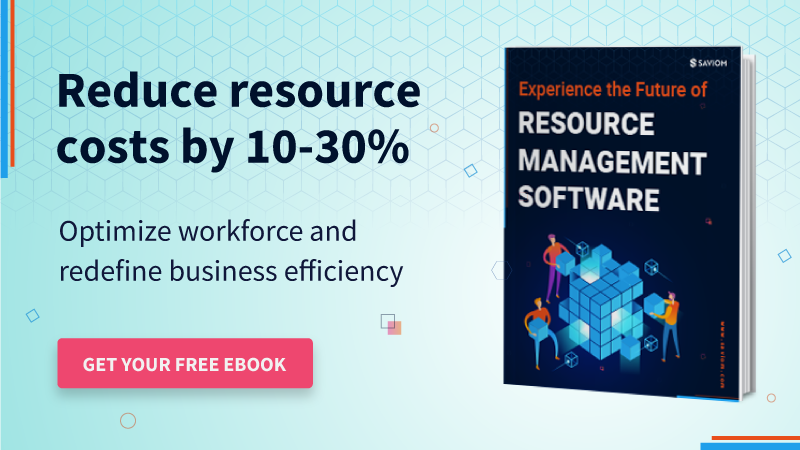According to Mckinsey, Social media platforms have the potential to raise employee productivity in the workplace by 20 to 25 percent. This stat contradicts our existing mindset about social media. We construe it as a distraction and a negative influence. So, how can it help in enhancing productivity? Social networking platforms have evolved from a medium of connecting people to a valuable marketing tool that can help attract customers, generate revenue, etc. It has also become a robust knowledge-sharing platform. Besides, it also plays an instrumental role in enhancing workplace productivity, and this article will explain how.
How did social media support organizations during the COVID-19 pandemic?
The power of social media came to light during the COVID-19 pandemic when organizations faced an unprecedented shift. It came in the form of mandated work from home, which took a toll on employee productivity and mental well-being, as everyone was isolated. During this time, social media sites became a platform to stay connected with peers and updated on the latest news and information. Nearly all social media sites amped up their features to incorporate the new business model. Moreover, the ongoing pandemic accelerated the use of online forum discussions to facilitate professionals to share industry-related insights and ways to transition to the new normal. Most organizations enhanced their presence on LinkedIn, where they promoted employees to share stories of professional and personal growth, challenges, etc. This helped everyone feel they were not alone in this. Moreover, social media has also become a preferred platform for global hiring. Additionally, many companies encouraged their employees to post their work from home pictures and videos on social media to foster a positive environment. Overall, social media has become a powerful way to promote employee well-being and connect with co-workers. Now let’s take a look at the benefits of using social media for business. 
Why is social media important for your business?
Social media is an effective platform for businesses to enhance their customer reach, sales, and profit margins. It offers a myriad of benefits. Here’s a list of compelling reasons to build your brand’s social media presence right away.
Positions the organization on a global platform
There are 3.96 billion social media users as of 2022, and the number is projected to grow to 4.41 billion by 2025. Given the exponential user growth rate, no organization can ignore this as an effective tool to make a mark in the marketplace. When organizations create their social media profiles on LinkedIn, Twitter, Facebook, Instagram, and YouTube, they inadvertently open their doors to a global audience. And as a result, they can target a larger clientele. Brands like GoPro, Nike, Spotify, Wayfair, and Starbucks are some examples that stand out in positioning their brand on the global map. Using different social media sites, one can engage with their customers, respond to their needs better, and even collaborate with the influencers to target the right audience.
Streamlines communication in a hybrid setup
The after-effects of the Covid-19 pandemic have split the workforce into three groups, in-office, hybrid, and remote, making collaboration a tedious process. Social media works as a bridge in these challenging situations by enabling employees to communicate effortlessly. It is faster than most traditional communication tools like email and other messaging software that have their own limitations. Furthermore, the informal nature of social media allows the Gen Zs and the millennial-led workforce to communicate seamlessly.
Read More: A Project Manager’s Guide to Effectively Manage a Hybrid Team
Leads to organic traffic and boosts sales
Social media is instrumental in getting organic traffic that eventually generates leads for businesses. Using social media analytics, businesses can target their customers by tracking their activity and also pay for sponsored ads to increase top-of-the-mind recall value. Thus, when customers plan to buy a product or service in that niche, the brand becomes their first choice. For example, people refer to Xerox when they want a photocopy and Coca-cola when they want a soft drink. In addition, brands today run attractive contests in collaboration with social media influencers and build a community that they can leverage to drive sales.
Networking with the right audience and tracking competitors
Social media helps businesses tremendously when connecting and networking with the right people. Further, it serves as an online marketplace where vendors meet their potential customers. The actionable insights provided by social media apps help brands understand their target audience, purchase history, and their buying behavior. Leveraging this data, they can approach them at the right time in their buying journey. Furthermore, businesses can run an extensive competitor analysis to determine the strengths, content type, audience engagement, gaps, and threats. They can use these insights to make data-driven decisions and amplify their social media marketing game. Along with this, even employees get a chance to connect with the professionals in their domain and gain industry knowledge.
Facilitates training and personal development for employees
The advent of remote work and online education has propelled social media apps to add a new feature to their existing suite. Popular platforms like LinkedIn learning, edWeb, Edmodo, ISTE community, and Ted-Ed have become the first preference for professional learning and career development. Employees can use their free time to access and learn more about their industry from training modules and articles shared on these platforms. Organizations also sponsor these courses for their workforce to gain a competitive advantage.
Read More: How Can Retraining/Upskilling Future-Proof Your Workforce?
Improves employee acknowledgement and retention
Since employees are working remotely, organizations can avail social media to acknowledge their hard work. They can add their employees’ pictures with captions talking about the tangible benefits their commitment brought to the company. This fosters a sense of accomplishment amongst the employees, and they can share these posts on their profiles to enhance credibility. It also helps increase the employee retention rate because they feel valued and recognized.
Helps recruit the right talent across geographies
According to Glassdoor, 72% of people look up their jobs on social media. Using social media as a hiring medium is an ongoing trend for most organizations. Businesses can recruit from a global talent pool by leveraging their social media presence. Moreover, job seekers are more likely to apply to a company with a strong brand presence online, reflecting their work culture. One of the prime examples is the well-known food chain McDonald’s. They used Snapchat in Canada to hire employees by taking an innovative approach. They tweaked the term applications to “snaplications” to attract the Genz and millennials as they were the prime targets. Aspirants could upload a thirty-second video sharing why they want to work at the burger franchise. Organizations can implement social media to elevate employee productivity, not just business benefits. Here are some ways to get started.
Read More: How to Plan for Short-term and Long-term Talent Acquisition Strategy
Tips on using social media to enhance employee productivity
When organizations use social media wisely and strategically, it can be beneficial in improving employee productivity in the long run. Here’s how;
Formulate a personalized social media calendar
Organizations heavily invest in building their social media presence and creating content around their brand on different platforms. However, the best practice is to create a content calendar that will help employees plan their schedules ahead of time. Further, it will prevent any clash on priority and enable employees to prepare the necessary content on time. For example, if the social media team prepares three posts a week, including videos, reels, and infographics, they can schedule the posts a week prior. This will ensure better time management and productivity, helping organizations consistently keep their audience engaged.
Encourage employees to take mental breaks for a healthy work-life balance
Due to various reasons like high workload, tight deadlines, etc., employees could miss out on taking breaks. However, constant work or long working hours can lead to burnout, lowering productivity. When employees consume social media content for entertainment, it releases dopamine, which activates the brain’s pleasure and reward center. Therefore, employees are rejuvenated and return with increased enthusiasm and vigor to continue work. They can also read some inspirational stories for a productivity boost if they feel disengaged.
Read More: How Resource Management Facilitates a Healthy Work-Life Balance
Create an online community for employees
Organizations can create an online community or forum on social media to help employees connect and communicate with like-minded people from their domain. They can raise questions and doubts, discuss trends, seek expert advice, and understand conceptual topics. These forums can work as a means of getting a third-party perspective on processes from professionals outside the organization. Employees can also utilize these online communities to collaborate on innovative ideas. It can expedite problem-solving, elevating productivity.
Use social media platforms for rewards and recognition
As discussed earlier, organizations can leverage social media to recognize their employees. One way is to post their story on LinkedIn, which helps boost employee morale or create a shout-out on stories and reels crediting an employee’s hard work. Sharing employee’s contribution gives them a sense of purpose as they will be able to see the conspicuous results of their efforts. It will also encourage them to work harder to attain further goals, helping them be more productive. Additionally, an enhanced feeling of joy and inclusivity will enhance employee retention.
Read More: Employee Recognition Programs: Types, Benefits and Best Practices
Set clear goals and tasks for social media
Social media can increase sales and reach a target audience, but doing it unorganized can do more harm than good. Therefore, social media managers can set clear goals and objectives every month. When employees get clear information in advance, they can divide the work accordingly. Moreover, organizations can first state the objective of using social media. For example, some may use it to hire global talent, while others seek to generate leads and increase sales. Clarifying the objective before executing the social media strategy will help employees put their efforts in the right direction, thus enhancing productivity.
Conclusion
As mentioned in this blog, leveraging social platforms in the workplace the right way can contribute to employee productivity. Therefore, it’s high time organizations encouraged their employees to use social media constructively and not perceive it as a source of distraction. Coupled with best practices, the strategies mentioned above can help you put social media to the best use.
The Glossary
Read More: Glossary of Resource Workforce Planning, Scheduling and Management
The Saviom Solution:
SAVIOM is the market leader in offering the most powerful and configurable solutions for managing enterprise resources efficiently and effectively. Having more than 20 years of experience, this Australian-based MNC has a global presence in over 50 countries. It is also popular with more than 100 customers and helps them achieve their business goals. SAVIOM also has products for project portfolio management, professional service automation, and workforce planning software which can be easily customized as per business requirements.











